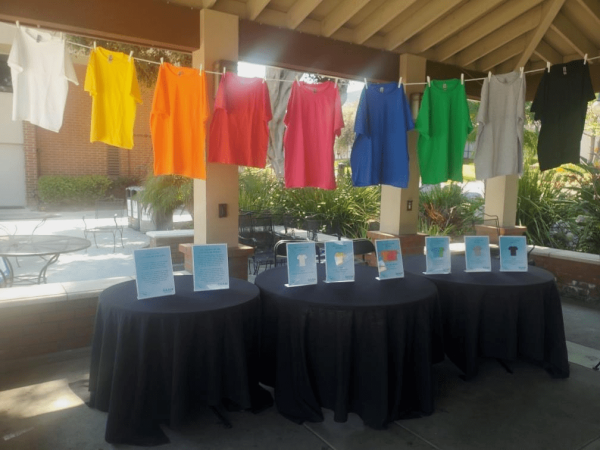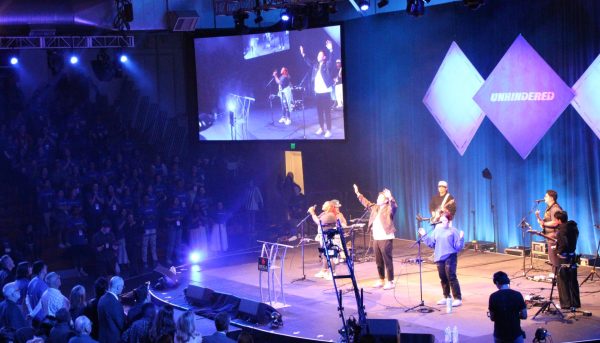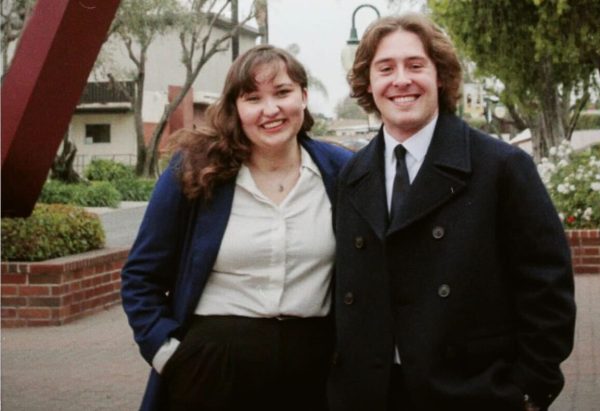Biola falling behind on faculty hiring plan
As Biola’s student population continues to expand, administration seeks to keep pace by hiring more full-time faculty and planning campus construction.
November 19, 2010
The unprecedented rise in Biola undergraduate and graduate school enrollment over the last 12 consecutive years has raised student-to-professor ratios, necessitating the hiring of more full-time faculty.
Within the last year, the full-time equivalency (FTE) increased by more than 300 students –– from 4,575 to 4,878, almost reaching the 5,000 cap that the city agreed upon with Biola.
Latest academic plan reveals faculty hiring strategy
“The FTE are those students who are on these 95-acres, taking classes [of 12 or more units] on this campus, not students studying abroad, not those at other locations or those in the BOLD program,” said Ken Bascom, senior director of facilities and planning.
The most recent academic plan prepared in 2007 by Chris Grace, vice president for Student Development, Todd Pickett, dean of Spiritual Development, and Gary Miller, former provost, implemented an aggressive faculty hiring plan to respond to the growth in student population.
The mandate, which can be found on the Biola website, called for the recruitment of 132 new faculty members in the next five years after the 2006-2007 school year. To recruit the new faculty by the 2010-2011 school year, the faculty expansion plan called for eight new faculty for the 2006 fiscal year, 15 for 2007, 25 for 2008, 40 for 2009, and 44 for 2010, costing an estimated $10.92 million.
However, the Academic Plan Progress Report for the 2007 fiscal year shows that, while the plan called for 15 new faculty, only 10 new positions were enacted, putting the university behind in its five-year plan.
High standards make Biola hiring process slow
According to the Western Association of Schools and Colleges (WASC) accreditation commission report, the process of hiring new faculty at Biola has been a slow and arduous task because of the selective and meticulous consideration the university places on potential employees.
“The pool of candidates for Biola is very small compared to the pool available for other secular as well as other Christian schools because of the essentiality of certain standards of biblical principles and breadth of experience,” Bascom said.
Although these expected economies have given Biola a smaller selection of possible faculty, the retaining of high quality faculty is an important aspect of the hiring process, president Barry Corey said.
“The idea of understanding competency is essential to a Biola education,” Corey said in a press conference earlier this month. “So what we’re trying to do is increasingly pan the landscape. How is our faculty getting the kind of training that they need?”
Biola has highest student-to-faculty ratio
In the most recent data released by the National Center for Education Statistics in 2004, Biola clinched the top seat among other Christian colleges for the highest full-time student to full-time faculty ratio at 26-1. California Lutheran held the second spot with a 20-1 ratio, Azusa Pacific came in third with a 20-1 ratio, while Point Loma and Seattle
Pacific had ratios of 21-1 and 19-1, respectively. Westmont and Wheaton came in with the lowest ratio, both with 15-1 ratios.
The objective proposed for Biola in 2007 looked to reduce this ratio from 26-1 to 20-1, assuming a 5 percent full-time enrollment increase each year. Because faculty growth has not been able to keep pace with the overall student enrollment growth, the WASC committee proposed Biola “move aggressively to increase the full-time faculty in proportion to the experienced growth of enrollments,” according to the WASC report.
The WASC committee evaluated faculty compensation and noted in their report that faculty compensation is a growing problem for Biola, a problem they attributed as a possible setback in hiring rates.
Administration hopes salary will attract faculty
In order to “aggressively” recruit new faculty, Biola has targeted faculty compensation; that is, salaries, WASC reported. According to the Biola IRS tax forms, approximately 70 percent of tuition goes to salaries and benefits. The increase in overall student population has indubitably increased revenue, thus additionally funding faculty compensation, resulting in a 4.5 percent increase from 2003 to 2005. This added revenue from larger enrollments than those of the past has permeated to faculty salaries, resulting in a more attractive stipend for possible employees.
Since 1994, the total head count of all students enrolled in Biola University increased 107 percent, with 2,961 students in 1994 and 6,123 students this year. With the increasing numbers in enrollment, other economies have naturally been affected. Bascom said that, while there is an increase in revenue, there is also a major need to supply the demand that higher enrollment necessitates. This demand for institutional resources has pressed the university to create new classrooms, faculty, housing and offices.
Construction planned to keep pace with growing staff
In order to support the increasing number of faculty and students, measures are being taken to accommodate various sectors, Bascom said. The Crowell School of Business, completed in 2007, made room for 16 faculty offices and 12 classrooms. Temporary offices have been set aside in other academic facilities, but the university is looking at many other options–– including the new Talbot building, which will provide additional classrooms as well as offices for various departments.
The 2007 academic plan progress report expressed a need for at least 30 new classrooms and more than 100 offices to accommodate new faculty, as well as current faculty, in temporary quarters. Many options are being weighed by trustees apart from the Talbot building for future growth, Bascom said, including buying off-campus property and remodeling some buildings.
“Leasing off-campus property is the best way to add additional offices and housing,” Bascom said. “Some of those would lessen what we would have to build on the main campus and if we built something on campus, we could chuck the leased properties easily.”






